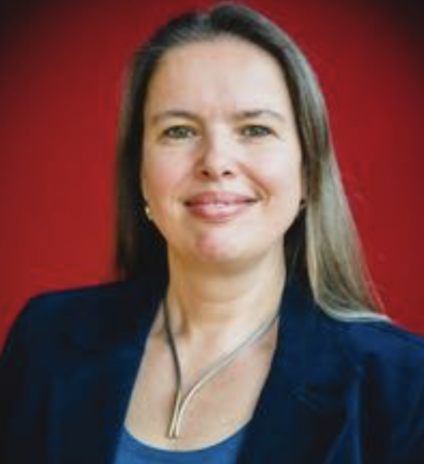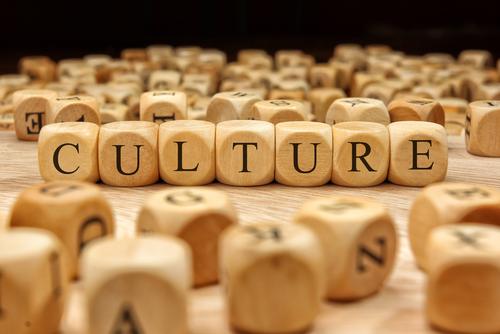Can you contribute anything to a positive culture at work? Well, you can do more than you might think, as shown both by research and practice! Whether you are a leader, a consultant or an employee, you can build an organization that thrives because of the type of culture—the values, beliefs and behaviors—that you encourage.
 That’s what Marcella Bremer talks about in her new book, “Developing a Positive Culture where People and Performance Thrive,” all about helping organizations become much more effective, “positive cultures.”
That’s what Marcella Bremer talks about in her new book, “Developing a Positive Culture where People and Performance Thrive,” all about helping organizations become much more effective, “positive cultures.”
Positive organizations are better at change, more innovative, more competitive, more profitable, and also contribute more to the world. When we work in a positive organizational environment, we can thrive at work, achieve extraordinary performance and make a meaningful contribution. And who wouldn’t want that!
This is a pragmatic and well-researched book on organizational culture change with a foreword by Dr. Kim Cameron, author of one of my favorite books, “Diagnosing and Changing Organizational Culture,” as well as “Positive Organizational Scholarship.”
In “Developing a Positive Culture,” Marcella focuses on what you can do personally to create a more positive culture where people and performance thrive. Her premise is based on renowned models and theories but contains hands-on tips to create the changes you want to see on your team, such as “Interaction Interventions” or “Change Circles.” If you influence one person, one interaction at a time, you can create positive change!
I urge you to grab this book now. I know Marcella well and do a lot of work with her organization, www.ocai-online.com. But I also wanted to share with you our recent interview in which she talks about herself, the work she does and how this book can help you become the positive leader you aspire to be. Enjoy.
Pre-order now while Marcella’s book is still discounted (305 pages of positive value!)
Our interview about positive change.
AS: Tell our readers about yourself, your passions and why you have been so involved in helping organizations get their “Culture” right.
MB: I work as a culture change consultant, trainer and author. I help people make a difference at work with positive leadership, change and positive culture. That’s because I see too many people, regardless of their position, suffer or merely survive at work and then take that home. But why does earning monrning need to be so depleting? Why do people wither away 40 hours a week?
I know how that feels. At the start of my work life I was once doing time between 8 AM and 6 PM in an office building to pay my bills. I didn’t feel appreciated and, worse, it felt like a prison. What a contrast with this other position where I brimmed with energy because my work mattered, my colleagues were supportive, and I was challenged to give it my all.
I started my own company because I wanted more freedom, autonomy, and purpose. As a consultant, I started using Cameron & Quinn’s validated Organizational Culture Assessment Instrument (OCAI) and later became the co-founder of OCAI online that provides the OCAI worldwide on the Internet.
Then I co-founded the positive Leadership & Change Magazine blog to help people make a difference at work and wrote my first book about my organizational culture work. As I love learning, I explored Positive Organizational Scholarship and started to experiment. That’s the basis of my second book: Developing a Positive Culture where People and Performance Thrive. My new endeavor is the online Positive Culture Academy where people learn to apply the book’s tools to their situation.
AS: This is a new book for you. Why did you want to write about Positive Cultures?
MB: Working with clients, I discovered it’s not just employees: Managers might also not know how to combine pleasure and performance at work. As a consultant, I once worked with some bright middle managers that kept repeating that higher management would torpedo their ideas, so their hands were tied. They told me that working with them was a waste of time and they wanted me to either change their bosses or let their employees work harder. But they, as middle managers, couldn’t change anything about their teams, let alone the whole organization.
I then worked with their top executives who were worn out because their organization wouldn’t move. They couldn’t change anything and made the best of their long days. They were holding each other hostage; just going through the daily grind and blaming the others.
This case, and another company that I worked with next, were the tipping point for me. I decided that there was no need to suffer like this and that I would develop Interaction Interventions: easy to apply even when you are too busy to start a whole-organization culture project, regardless of your position as middle manager in a large corporation, or supervisor, or co-worker, or what have you.
In addition, it’s not just about happy workers. Positive organizations are proven to be more engaged, innovative, competitive, agile, collaborative and productive. So, it’s a win-win for all.
AS: I bet it is full of things that businesses can do to build their positive cultures and by so doing really improve their people’s experiences and performance. Can you share some of the highlights?
MB: The book shares many tools to diagnose and change culture. A positive culture needs four special ingredients and I discuss ways to develop them.
You can develop a positive culture with Interaction Interventions and/or Change Circles. Interaction Interventions are small actions and interactions that people can do on a daily basis to start influencing their meetings, co-workers, and eventually the organizational network. They are small but not insignificant at all.
Culture happens when people get together because they copy, coach and correct each other automatically. Culture is sustained in every interaction and action so if you start changing that, and you work together with like-minded positive peers, you start to influence the system. Interactions in meetings matter to the culture. So I share many ways to make meetings more interactive and positive That way people can ask more than they tell. We also focus on what is working well.
Then there’s a tool box for leaders to work with their teams on values, purpose, positive challenges and trust.
Additionally, there are Change Circles. This enable you to enroll the whole organization in meaningful culture change. This is a larger-scale approach that works because there’s attention for personal interactions in small groups that influence the culture.
AS: What might be three of the most important take aways?
MB: For me, three important takeaways are:
1. You make a difference to the organizational system where you work. It is a non-linear network that you can influence. Retrieve your personal responsibility and take action!
2. If you influence one person, one interaction at a time, you contribute to a more positive culture. This part of culture is very concrete to work with and you can start today. It is especially magic to “liberate” your meetings: read more in the book.
3. There is no need to suffer to survive. When you thrive, you deliver the best you have to offer and that’s called “positive deviance”. It’s positive for yourself and for the organization.
AS: Where can they reach you and buy your book?
MB: You can buy the book on Amazon,
Or check out the book page on her website.
The Positive Culture Academy focuses on you and how you can be the change you wish to see on your team. The Academy is your how-to-do it for your situation: for all leaders, middle managers or other professionals.
We’ll work online and interactively in a committed group. The first class starts on April 2. I hope to see you at www.positive-culture.com.
You can also contact Marcella via marcella@positive-culture.com
From Observation to Innovation,

Andi Simon, Ph.D.
Corporate Anthropologist | President
Simon Associates Management Consultants
Info@simonassociates.net
@simonandi



